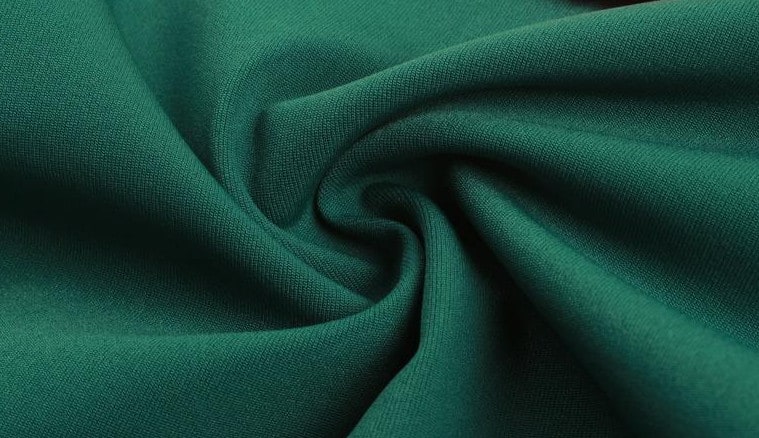Table of Contents
- Introduction to Polyester Fabric
- The History and Evolution of Polyester
- How Polyester Fabric is Made
- Key Characteristics of Polyester
- Different Types of Polyester
- Uses of Polyester Fabric in Various Industries
- Pros and Cons of Polyester
- Polyester vs. Other Fabrics
- Caring for Polyester Fabric
- Sustainability of Polyester Fabric
- Is Polyester Fabric Right for You?
Introduction to Polyester Fabric
Polyester is a synthetic fabric made primarily from petroleum-based materials. Known for its durability, resilience, and versatility, polyester is one of the most popular fabrics globally. It’s found in everything from clothing and upholstery to industrial applications. With its high resistance to shrinking, wrinkling, and stretching, polyester is a convenient, low-maintenance choice for a range of products.
For high-quality polyester fabric that blends durability with style, explore Tangyi Fashion.

The History and Evolution of Polyester
Early Development
Polyester was developed in the early 20th century by British chemists, but it wasn’t until the 1940s that it gained commercial popularity. By the 1950s, companies like DuPont in the United States started marketing polyester fabric as a “miracle fiber” due to its durability and ease of care.
Polyester in Modern Fashion
Polyester has continued to evolve, becoming a staple in the fashion and textile industry. The fabric is now widely used for fast fashion and high-end garments alike, and its popularity is expected to grow as brands focus on creating blends that are more breathable and sustainable.
How Polyester Fabric is Made
The Production Process
Polyester is made from a chemical reaction between petroleum-based compounds, such as ethylene glycol and terephthalic acid. This reaction produces a polymer that is spun into fibers and woven into fabric. Here’s a simplified breakdown of the process:
- Polymerization: Ethylene glycol and terephthalic acid undergo a reaction, creating long molecular chains.
- Extrusion: The polymer is extruded into fine threads.
- Spinning: These threads are spun into yarns, which can be woven or knitted into fabric.
Recycling Polyester
Polyester is also recyclable, which has led to the development of recycled polyester (rPET). This sustainable alternative is created from recycled plastic bottles, reducing waste and environmental impact.
Key Characteristics of Polyester
1. Durability
Polyester is highly durable, resistant to tears, and can withstand frequent wear and wash cycles, making it ideal for high-activity garments and industrial textiles.
2. Wrinkle Resistance
Unlike natural fibers, polyester is wrinkle-resistant, allowing garments to retain a smooth appearance without ironing—a perfect feature for busy lifestyles.
3. Quick-Drying
Polyester’s low absorbency allows it to dry quickly, which is particularly beneficial in activewear and outerwear.
4. Lightweight
Polyester is lightweight, making it suitable for layering in colder seasons or for lightweight summer apparel.
For clothing that retains these qualities, check out Tangyi Fashion’s polyester collection, designed with both comfort and durability in mind.
Different Types of Polyester
1. PET (Polyethylene Terephthalate)
PET is the most common type of polyester, known for its versatility and strength. It’s widely used in textiles and consumer goods.
2. PCDT (Poly-1, 4-Cyclohexylene-Dimethylene Terephthalate)
PCDT polyester has greater elasticity and resilience than PET, making it ideal for heavy-duty textiles like curtains and upholstery.
3. Recycled Polyester (rPET)
Recycled polyester is made from plastic waste, typically PET bottles. This eco-friendly alternative offers the same durability and versatility as virgin polyester, with a reduced environmental footprint.
Uses of Polyester Fabric in Various Industries
1. Fashion and Apparel
Polyester is used for activewear, casual wear, outerwear, and even formal attire. Its resilience and low-maintenance qualities make it a popular choice in fashion. For fashionable polyester pieces that don’t compromise on quality, visit Tangyi Fashion.
2. Home Textiles
Polyester is commonly found in home textiles such as curtains, bedspreads, and upholstery. Its durability and resistance to fading make it ideal for items exposed to sunlight and frequent use.
3. Industrial Applications
Polyester’s high strength makes it suitable for industrial products like ropes, conveyor belts, and safety harnesses. Its versatility and toughness are unmatched by many other fibers in these demanding applications.

Pros and Cons of Polyester
Pros
- Durable: Resists wear and tear better than many natural fibers.
- Affordable: Less expensive to produce and purchase than cotton or silk.
- Low Maintenance: Wrinkle-resistant and easy to wash.
- Moisture-Wicking: Great for activewear due to its quick-drying properties.
Cons
- Low Breathability: Polyester can feel less breathable than natural fibers like cotton, although blends improve this.
- Environmental Impact: Petroleum-based and takes centuries to decompose.
- Prone to Static: Polyester can generate static, especially in dry conditions.
For polyester clothing that combines these strengths with style, browse Tangyi Fashion’s collection.
Polyester vs. Other Fabrics
Polyester vs. Cotton
- Durability: Polyester is more durable and less prone to shrinking than cotton.
- Maintenance: Polyester is wrinkle-resistant, while cotton often requires ironing.
- Eco-Friendliness: Cotton is biodegradable, but polyester’s recyclability makes it a competitive option in sustainability.
Polyester vs. Nylon
- Strength: Both are strong, but polyester is more UV-resistant, making it better for outdoor use.
- Moisture-Wicking: Polyester dries faster, making it preferable for activewear.
Caring for Polyester Fabric
Washing Tips
- Use Cold Water: Cold water preserves the fabric and reduces energy consumption.
- Gentle Cycle: To avoid wear, wash on a gentle cycle with mild detergent.
Drying Tips
- Air Dry When Possible: This helps preserve the fabric’s integrity.
- Low Heat in Dryer: If using a dryer, select the lowest heat setting to prevent potential shrinkage.
Ironing Polyester
Polyester is generally wrinkle-resistant but can be ironed on a low heat setting if needed.
For stylish, easy-care polyester items, check out Tangyi Fashion.

Sustainability of Polyester Fabric
Environmental Concerns
Polyester is petroleum-based, and its production contributes to pollution and resource depletion. Additionally, polyester garments release microplastics into the environment when washed, impacting aquatic life.
Recycled Polyester: A Greener Option
Recycled polyester (rPET) uses existing plastic, such as discarded bottles, to create new fibers, reducing waste. While it’s not a complete solution, rPET represents a step toward a more sustainable future.
For brands incorporating sustainable practices, visit Tangyi Fashion to explore environmentally-conscious polyester fashion.
Is Polyester Fabric Right for You?
Polyester is a versatile, durable fabric suitable for various applications, from fashion to industrial products. While it has drawbacks, especially regarding environmental impact, recycled polyester offers a more sustainable option. Whether you’re seeking low-maintenance garments, outdoor gear, or stylish fashion, polyester is a reliable choice that offers numerous benefits.
If you’re ready to add high-quality polyester pieces to your wardrobe, visit Tangyi Fashion to explore a range of stylish, durable options designed to meet diverse needs.


